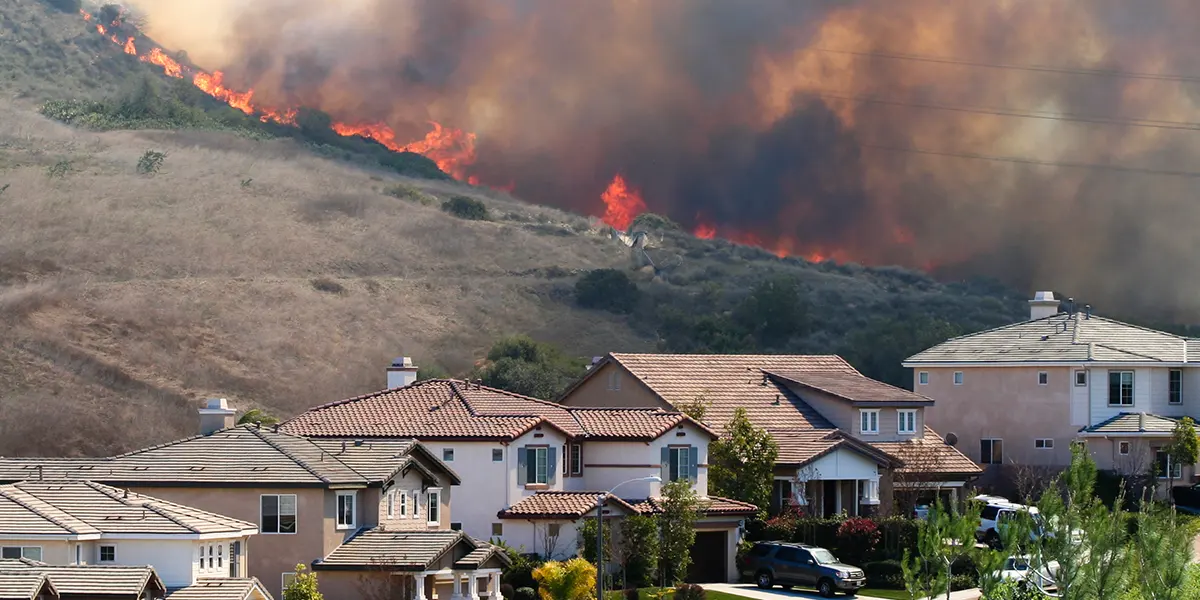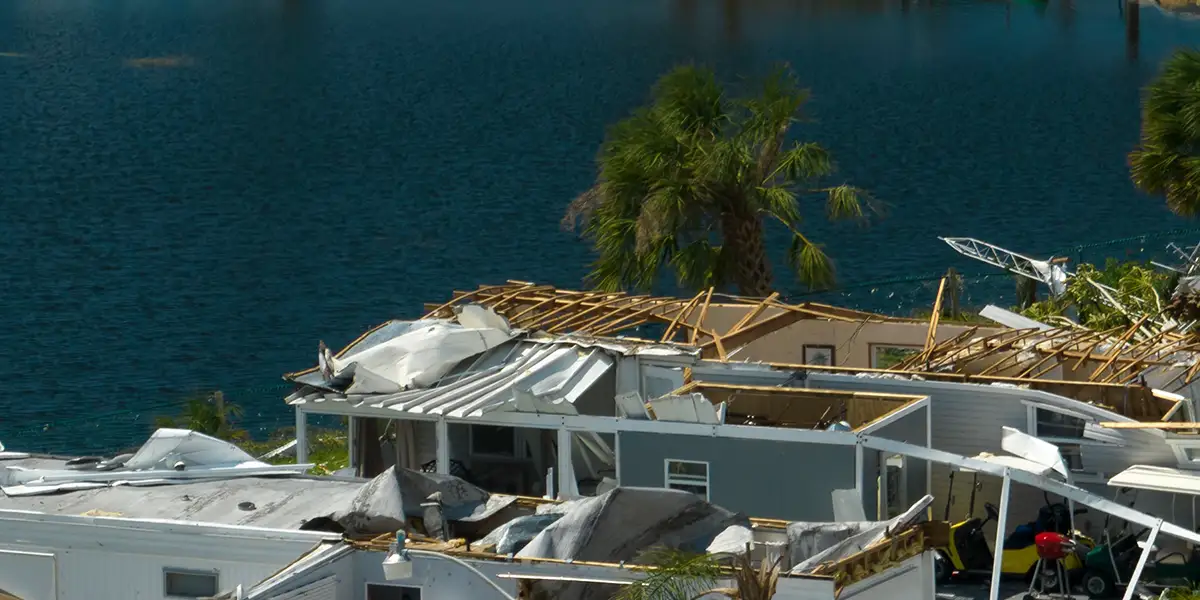A year at war. Russian invading Ukraine took the world on its heels one year ago, as few across the globe had assumed that Russia would set itself on a war of aggression. In turn, the conflict has profoundly affected the global energy markets. As an outcome, economic uncertainty, supply shortages, price volatility and security issues have contributed to what has been described as an energy crisis, delivering unprecedented complexity and highlighting vulnerabilities across the global energy sector. Given these vulnerabilities, how can climate change cause unprecedented hardships for energy projects?
Beyond Ukraine, the war has activated a global energy crisis for countries heavily reliant on fossil fuels at a time still recovering from the effects of the global pandemic. At the same time, Russia weaponises itself with the energy sector by cutting natural gas to the EU by around 80% between May and October 2022, leaving the bloc with a significant shortfall in its energy mix and a pressing need to find energy alternatives from other places. A journey that the IEA warns, “we know from past energy crises that the adjustment process is unlikely to be a smooth one” that has invigorated the demand for clean energy sources.
“Time is not on our side, and our climate is changing before our eyes. We need a complete transformation of the global energy system,” stated WMO Secretary-General Prof Petteri Taalas.
Variations of Physical-Risks
Increasing severity and frequency of climate risk considerations are failing to be considered for climate vulnerabilities across the global transitioning energy sector. Climate change will inevitably influence renewable energy systems due to weather-related changes in precipitation, sun, and wind, which could impact thermal power plants' turbine efficiency and cooling systems. Climate change directly affects fuel supply, energy production, and the physical resilience of current and future energy infrastructure. The impact of climate change may affect the resilience of systems, suggesting a need for adaptation of the design and implementation of energy infrastructures as it affects transmission systems or infrastructure siting. The most identified climate risk to the energy sector is the upscaling of hydrogen as an energy carrier and safety challenges related to hydrogen transport and storage. Other risks are power supply security, extreme rainfall, hydropower production and conflicts with biological diversity—mostly related to wind power construction on land and at sea—and hydropower upgrading and expansion.
Physical climate-related risks that have the potential to disrupt existing and future energy infrastructure include heatwaves, droughts, floods and wildfires. Heatwaves put pressure on electricity systems in multiple ways. They increase demand as people turn up air-conditioning, and some appliances must work harder to maintain cool temperatures. At the same time, higher temperatures can also squeeze electricity supplies by reducing the efficiency and capacity of traditional thermal power plants, such as coal, natural gas and nuclear. Extreme heat can reduce water availability for cooling plants or transporting fuel, forcing operators to reduce their output. In some cases, it can result in power plants shutting down, increasing the risk of outages.
Furthermore, droughts have the potential to invigorate water scarcity with the need for renewable energy systems to power underground pumping and water reservoir capacities. Moreover, energy systems need to control floods with drainage infrastructure control and water conveyance systems. Last of all, exacerbated by droughts, the physical risk of wildfires can damage energy infrastructure, including heat increases conduction and can lead power lines to the ground. However, in the change climate landscape, there is a lack of understanding of climate change impacts on energy across technologies that needs to be fully understood by energy companies.
Undermining Future Energy Security
“Energy markets and policies have changed due to Russia’s invasion of Ukraine, not just for the time being, but for decades to come,” said IEA Executive Director Fatih Birol.
Europe has no choice but to look towards decarbonising the global energy supply. This implies additional investment and usage of essential resources that are key to accelerating renewable energy projects but face the daunting implication of rising production costs and supply chain challenges. As we transition from fossil-based energy production and consumption systems to renewable energy sources, system leaders, policymakers, and governments are challenged to balance the security of energy supply, affordability and decarbonisation. Achieving rapid clean energy transitions depends on enhancing access to low-cost finance for capital-intensive clean energy projects. Around 70% of global clean energy investment will need to be carried out by private developers, consumers, and financiers, responding to market signals and government policy incentives. However, the increasing severity and frequency of climate events are already negatively affecting energy infrastructure investments as the energy transition has gotten underway, including stranded assets that must be a strong consideration for both traditional and utilities energy companies. Physical climate risks can result in financial damage to an infrastructure asset as they cause higher operating expenses (OPEX), capital expenditures (CAPEX) losses, write-offs and depreciation, stimulating significant revenue interruptions.
Interconnections
Arising renewables centres in the form of entire nations for other nations' energy sources are invigorating the energy transition mix and advancing the need for climate risk assessments of energy infrastructures. This is showcased by Xlinks’ Morocco-UK high-voltage direct-current (HVDC) megaproject, facilitating the generation of 10.5 gigawatts (GW) of renewable power in Morocco exclusively for the UK market to generate 26 terawatt-hours per year and supplying power to more than seven million homes by 2030, benefiting from the Moroccan Sahara desert’s solar sunshine and windy night-time conditions. Morocco is an emerging renewables centre. Its solar, wind and hydro mix produces 35% of the country’s renewable energy, aiming to increase this to 50% by 2030 and 80% by 2050. The country has the third highest Global Horizontal Irradiance (GHI) in North Africa, 20% greater than Spain’s GHI and over twice that of the UK, supported by the shortest winter day, which offers more than 10 hours of sunlight. Phenomenal clean energy can be transported via four 3,800km high-voltage direct current (HVDC) subsea cables to the UK, as shown in figure 1.

However, the distance and placement of energy assets in other countries bring enormous risks concerning increasing uncontrollable climate risk. Xlinks’ executive chair, Sir Dave Lewis, cautioned that recent political unrest that has seen off three prime ministers in less than six months had stalled its progress for one year. Besides potential geopolitical risk, climate risk is always a substantial risk for energy utility companies, such as flooding, earthquakes and droughts that cost Morocco over $575 million annually. International energy megaprojects of nations relying more on neighbours for energy are increasing, exampled by the world’s longest HVDC ‘interconnector’ Viking Link, exchanging electricity between Denmark and the UK with a 765km undersea cable supported by Siemens. The UK already has eight electricity interconnectors with a capacity that has risen to 8.4 gigawatts (GW) and is expected to double to 18GW by 2030. Hence, it is more important that utility companies assess the climate risk of their megaprojects to prevent the impact on energy infrastructure and their clients.
Preparedness and Resilience
As climate risks keep developing with time, energy projects should include evolving processes for monitoring, learning and managing changes that can involve a package of management measures and structural measures. For asset-heavy energy companies, several renewable energy climate risk resilient plans must be integrated into short- and mid- to long-term decision-making and planning processes to mainstream, structure and scale up renewable energy adaptation projects. Hence, measuring climate risk is necessary to upgrade infrastructure and optimise existing operations. Managing responses in emergencies by developing early warning systems and avoiding disruptions or damages to facilities and operations can affect future net corporate cash flows, as can rising ongoing costs for adaptation and mitigation of climate-related vulnerabilities. To raise climate risk concerns for owners of energy assets, there is an absence of tools with energy companies needing to review the mix of energy assets in their portfolios and increase capital allocations to renewables. To strengthen the enabling environment for developing climate-resilient energy infrastructure to the risks of climate change, decision-makers need to access high-quality and consistent data to mainstream adaptation into planning decisions to become more physically resilient.
Sources
- In, Soh Young and Manav, Berk and Venereau, Clothilde M.A. and Cruz Rodriguez, Luis Enrique and Weyant, John, Climate-Related Financial Risk Assessment on Energy Infrastructure Investments. Available at SSRN: https://ssrn.com/abstract=4043744 or http://dx.doi.org/10.2139/ssrn.4043744
- Lyster, Rosemary and Farber, Daniel A. and McFadden, Rory, Climate-Induced Wildfires and Strengthening Resilience in Electricity Infrastructure (August 26, 2022). Utrecht Law Review, Forthcoming, Available at SSRN: https://ssrn.com/abstract=4201501
- Yalew, SG; van Vliet, MTH; Gernaat, DEHJ; Ludwig, F; Miara, A; Park, C; Byers, E; ... van Vuuren, DP; + view all (2020) Impacts of climate change on energy systems in global and regional scenarios. Nature Energy, 5 (10) pp. 794-802. http://dx.doi.org/10.1038/s41560-020-0664-z
- https://www.ft.com/content/d2652702-1100-47c9-ae62-e562806bb154
- https://iea.blob.core.windows.net/assets/59a3fa3e-5dba-4ba0-be95-77c49d5ffaf4/ClimateInfrastructureInvesting.pdf
- https://www.iea.org/news/world-energy-outlook-2022-shows-the-global-energy-crisis-can-be-a-historic-turning-point-towards-a-cleaner-and-more-secure-future
- https://www.irena.org/-/media/Files/IRENA/Agency/Publication/2021/Aug/IRENA_Bracing_for_climate_impact_2021.pdf
- https://www.mckinsey.com/industries/electric-power-and-natural-gas/our-insights/why-and-how-utilities-should-start-to-manage-climate-change-risk
- https://www.nationalgrid.com/stories/journey-to-net-zero-stories/building-clean-energy-connection-denmark-begins
- https://www.oecd.org/environment/cc/policy-perspectives-climate-resilient-infrastructure.pdf
- https://public.wmo.int/en/media/press-release/climate-change-puts-energy-security-risk#:~:text=Climate%20change%20directly%20affects%20fuel,to%20reduce%20fossil%20fuel%20emissions
- https://viking-link.com/
- https://www.weforum.org/agenda/2022/11/russia-ukraine-invasion-global-energy-crisis/
- https://www.worldbank.org/en/results/2022/08/11/supporting-morocco-s-journey-to-disaster-and-climate-resilience
- https://xlinks.co/morocco-uk-power-project/





